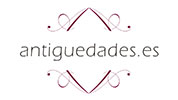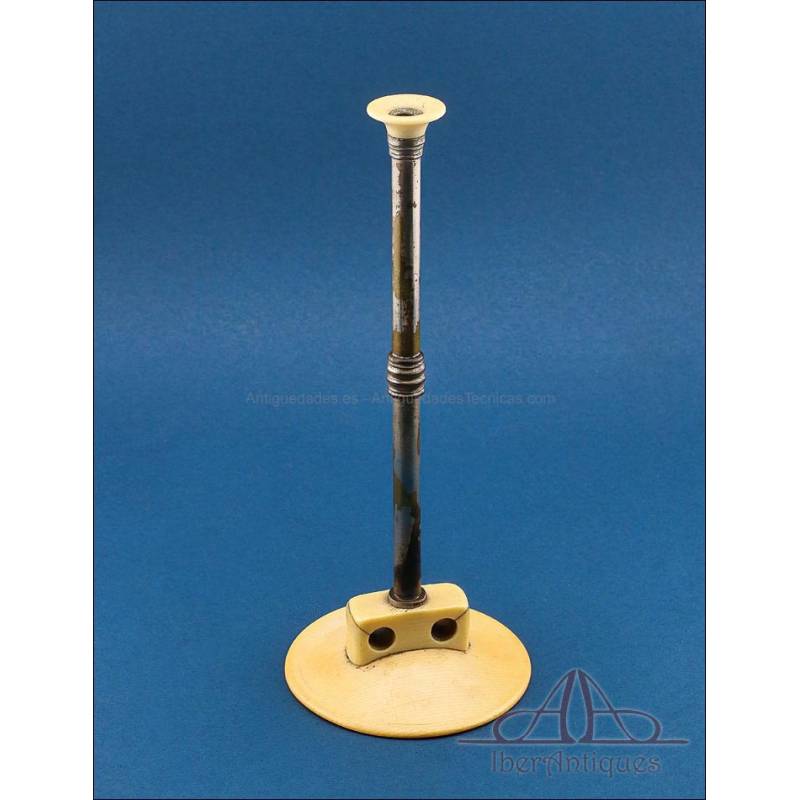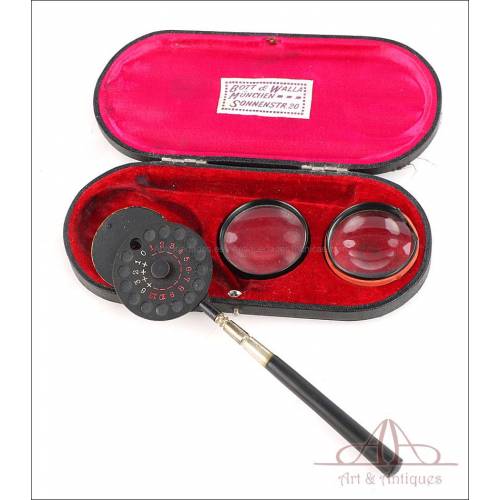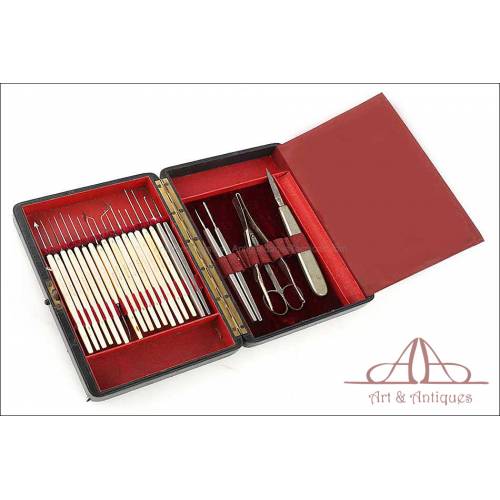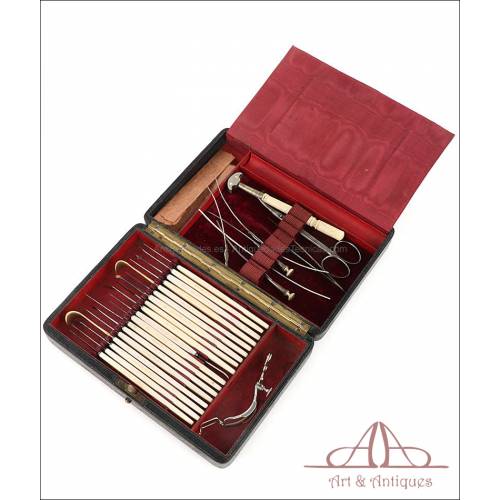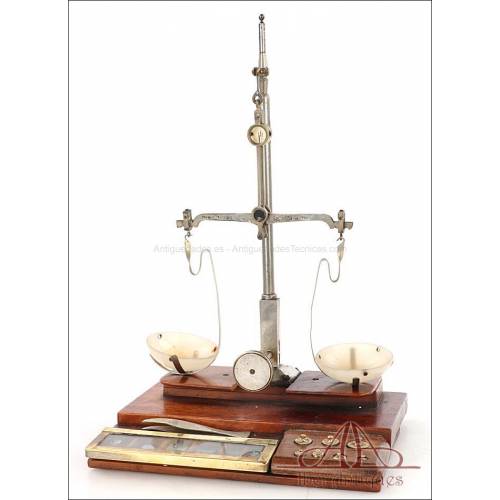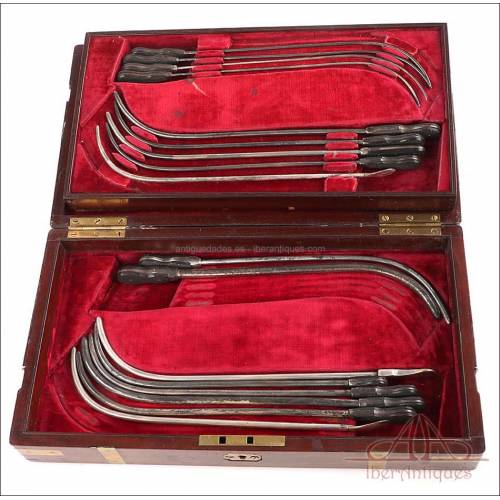E-265
Antique ivory and silver plated stethoscope, late 19th century
Antique stethoscope from the late 19th century in silver-plated metal and ivory. A rare piece for collectors and lovers of medical history.
Sold!
Antique ivory and silver-plated metal stethoscope, 19th century
This exceptional late 19th-century stethoscope is a unique piece that blends elegance with the medical precision of its time. Crafted in silver-plated metal with genuine ivory components, this instrument showcases the meticulous craftsmanship used in the creation of medical tools of the era. Its cylindrical design, with an ivory disc at the base and a flared ivory bell at the top, is characteristic of the early monaural stethoscopes employed by pioneering physicians in acoustic diagnosis.
The silver-plated metal displays an attractive patina with minor signs of wear , subtle reminders of its age and use , enhancing its authenticity without compromising its structural integrity. The ivory elements, featuring their natural grain, remain in excellent condition, lending a sense of nobility and refinement. This stethoscope is not only a symbol of 19th-century medical advancement but also a functional work of art that captures the essence of classical medicine.
Perfect for collectors, medical historians, or interior designers seeking a unique item with remarkable historical value. It would be ideal displayed in a medical antiques showcase or as a distinguished conversation piece in a professional practice. Don’t miss the opportunity to own this rare piece of medical history.
History of the Stethoscope
The stethoscope was invented in 1816 by French physician René Laennec, who sought a more effective and less intrusive way to auscultate patients. His first model was a simple wooden tube, which evolved over time in both materials and design. By the late 19th century, monaural stethoscopes like this one , crafted from a combination of metal and ivory , had become essential tools in medical practice. Although eventually replaced by modern binaural models, these early stethoscopes are still highly valued today for their historical significance and aesthetic appeal.
